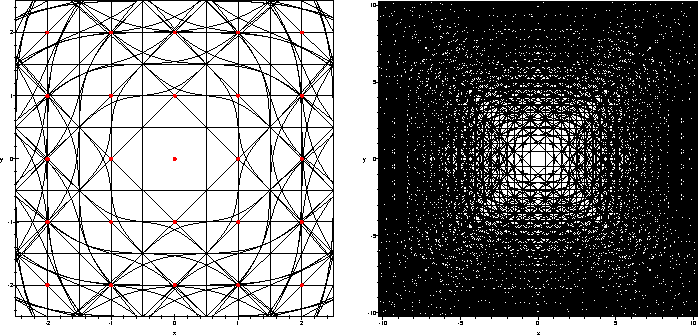The present context is certainly not restricted to Riemannian metrics. As an indicator of this we now discuss a different set of examples.
Let k be a positive number greater than one. Equip
![]() with the
distance function
with the
distance function
 |
Now the problem of determining
![]() for any
given t is unsolved for general k. In fact, even for
certain integer values of k greater than 2, it is not known
whether
for any
given t is unsolved for general k. In fact, even for
certain integer values of k greater than 2, it is not known
whether
![]() ever contains at least two points
that are not related by the symmetries of the problem.
For k=4, the smallest t for which
ever contains at least two points
that are not related by the symmetries of the problem.
For k=4, the smallest t for which
![]() has at least two (unrelated) solutions is given by
has at least two (unrelated) solutions is given by
There are some things that can be said, however. In the
situation where
![]() ,
the mediatrices intersect
the coordinate axes only in irrational points or in multiples
of 1/2. For if x=(p/q,0) is a point of a mediatrix
L(0,0),(a1,a2), we have
,
the mediatrices intersect
the coordinate axes only in irrational points or in multiples
of 1/2. For if x=(p/q,0) is a point of a mediatrix
L(0,0),(a1,a2), we have
To compute Figure 5.1, we took advantage of the smoothness of
the metric. Not all metrics are sufficiently smooth for this procedure to
work. Even for Riemannian metrics, in general the distance function is
only Lipschitz, which will not be sufficiently smooth.
For each
![]() ,
define a Hamiltonian:
,
define a Hamiltonian:
As mentioned above, for a general Riemannian metric, the distance function is only Lipschitz. This means we have no guarantee that the solutions of the above differential equation are unique. Indeed, there are examples of multiply connected Riemannian manifolds with self-intersecting mediatrices, as will be shown in a forthcoming work.